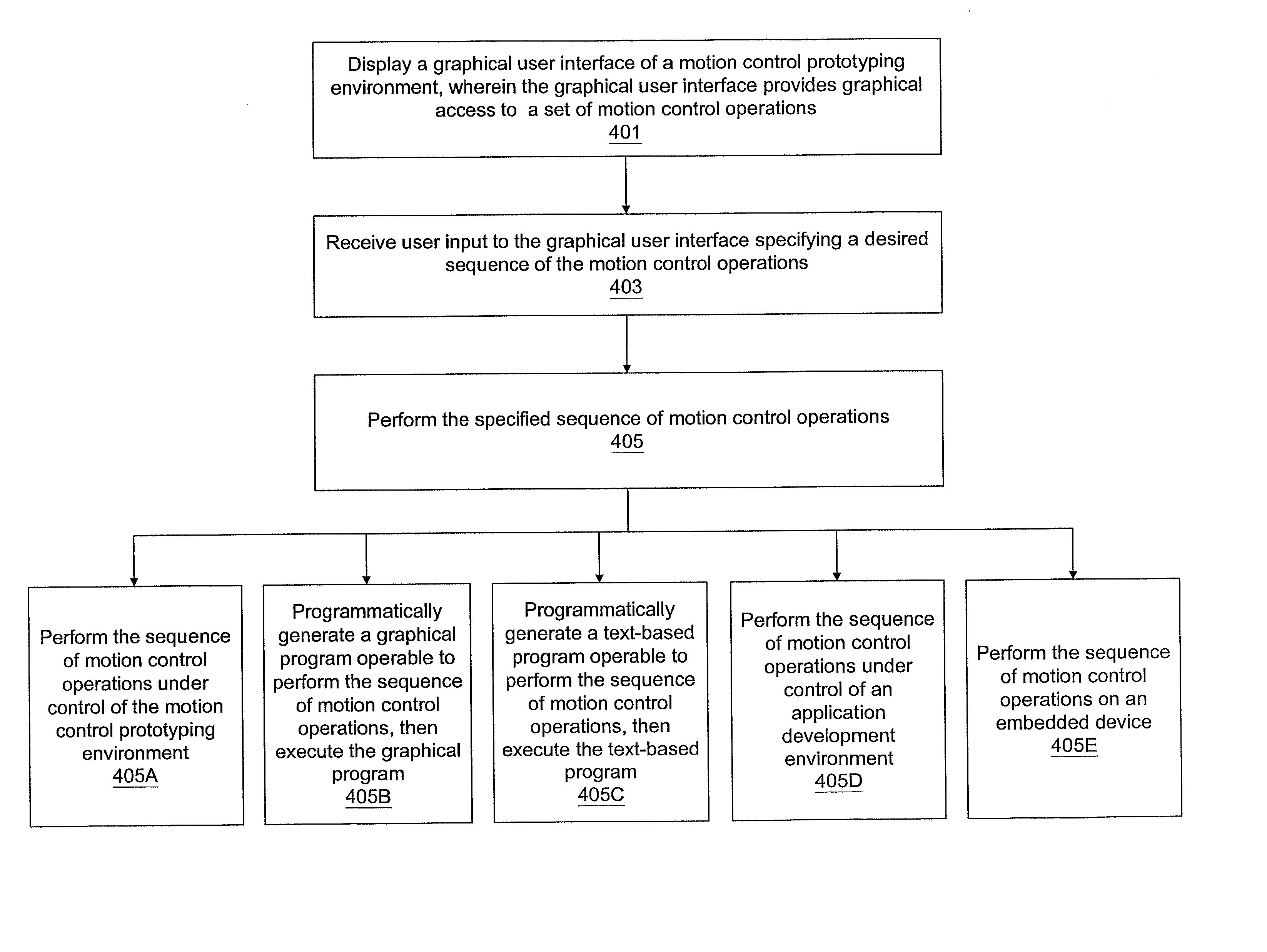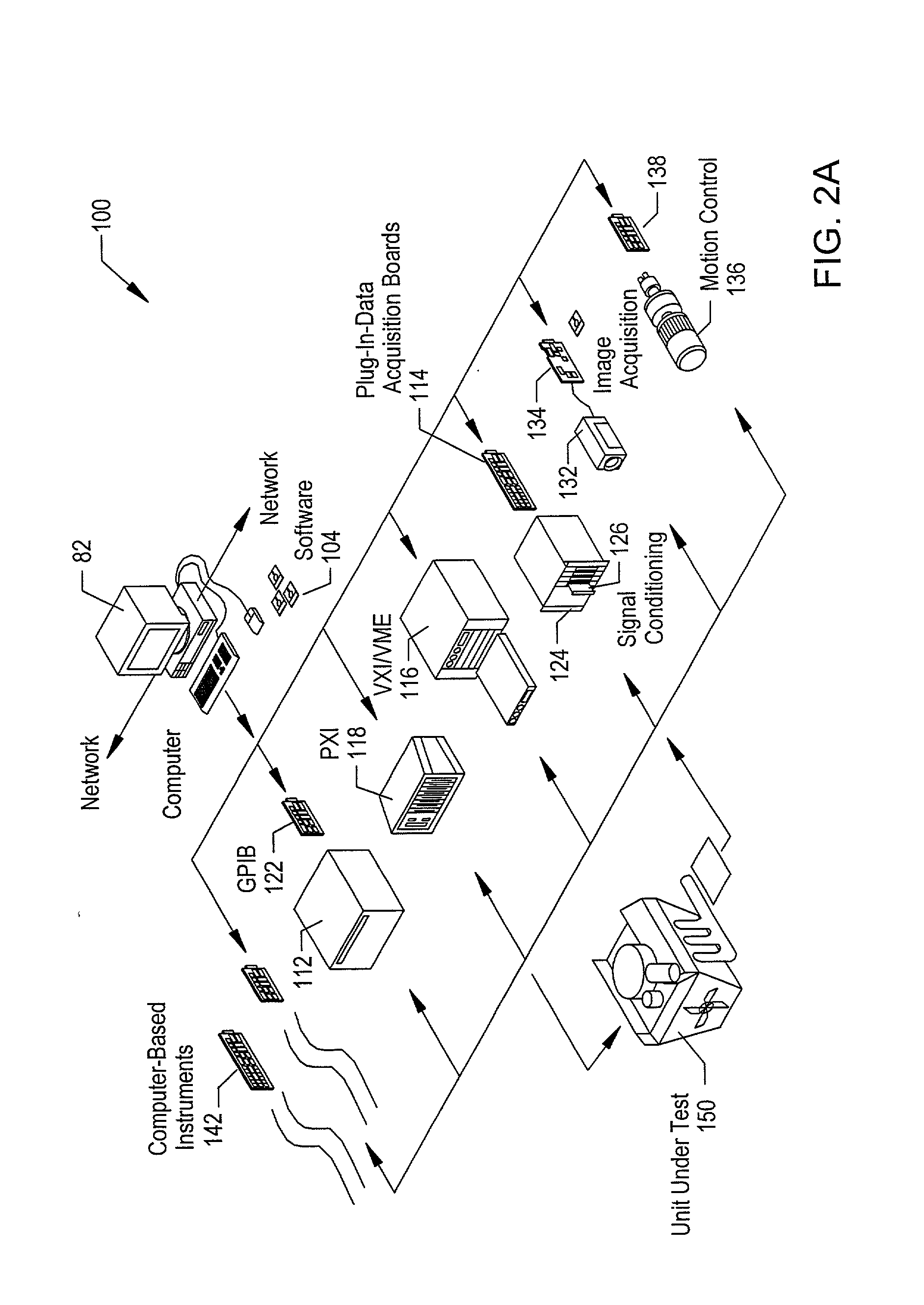System and method for programmatically generating a graphical program based on a sequence of motion control, machine vision, and data acquisition (DAQ) operations
a programmatic and sequence technology, applied in the field of graphical programming, can solve the problems of steep learning curve in the development of motion control applications, and achieve the effect of easy and efficient development/prototyp
- Summary
- Abstract
- Description
- Claims
- Application Information
AI Technical Summary
Benefits of technology
Problems solved by technology
Method used
Image
Examples
use case 5-- flying
[0210] Use Case 5--Flying Welding
[0211] The fifth example use case pertains to a flying welding application. The objective is to weld one spot on a part moving on a conveyor belt. The welding gun is installed on a linear arm controlled by a linear motor. The welding needs to happen without stopping the conveyor belt.
[0212] This application may be implemented using a sequence in the motion control prototyping environment as follows:
[0213] A reference move operation to move the arm to its starting position waiting for a part.
[0214] A gearing operation which may start on a high-speed capture trigger. This operation gears the linear axis to an encoder mounted on the conveyor belt. The gearing ratio is set at 2:1.
[0215] A wait block to wait for a pre-determined amount of time, to allow the linear arm to be positioned over the piece to be welded.
[0216] A gearing configuration operation to change the gear ratio to 1:1. It writes to a digital output bit to start the welding. The arm may now...
example -
[0364] Example--Reading and Displaying Status
[0365] The user can track the velocity and position of a motion task with the GetCurrentVelocity and GetCurrentPosition methods. The GetCurrentVelocity method returns the velocity of the entire task. The GetCurrentPosition method returns an array containing the current position on each axis. In this example, the user uses a textbox to display the velocity and the Measurement Studio Graph (CWGraph) control to chart the current position.
[0366] 1. The user places a TextBox on the project form. The user changes Name to txtVelocity and deletes the text from Text. The user places a Label on the form and changes Caption to Current Velocity.
[0367] 2. The user places a CWGraph control on the form. By default, Visual Basic names the control CWGraph1. The user right clicks the control and selects Properties to configure the control. On the Ticks property page, the user sets Axis caption to XAxis for the XAxis. In the listbox, the user selects YAxis-...
example-- blending
[0424] Example--Blending Moves
[0425] In this example, the user uses the NIMotion control property pages to change the previously configured task so that it uses blended moves.
[0426] 1. On the Tasks property page, the user sets Type to Blended moves.
[0427] 2. The user switches to the Moves property page and selects the first move. In this task, the moves should begin blending before the previous move starts decelerating. On the Velocity subtab, the user sets Blend to before decelerating.
[0428] 3. Because the user specified that he wants to start blending before decelerating, the blend factor is automatically set to -1. This value causes the pending move to start when the previous move finishes its constant velocity segment and starts to decelerate.
[0429] 4. The user configures each move in the task with the same three settings.
[0430] 5. The user runs the program. Now the moves transition more smoothly. The user stops the program when finished testing.
[0431] The BlendCompleted Event
[0...
PUM
 Login to View More
Login to View More Abstract
Description
Claims
Application Information
 Login to View More
Login to View More - R&D
- Intellectual Property
- Life Sciences
- Materials
- Tech Scout
- Unparalleled Data Quality
- Higher Quality Content
- 60% Fewer Hallucinations
Browse by: Latest US Patents, China's latest patents, Technical Efficacy Thesaurus, Application Domain, Technology Topic, Popular Technical Reports.
© 2025 PatSnap. All rights reserved.Legal|Privacy policy|Modern Slavery Act Transparency Statement|Sitemap|About US| Contact US: help@patsnap.com



